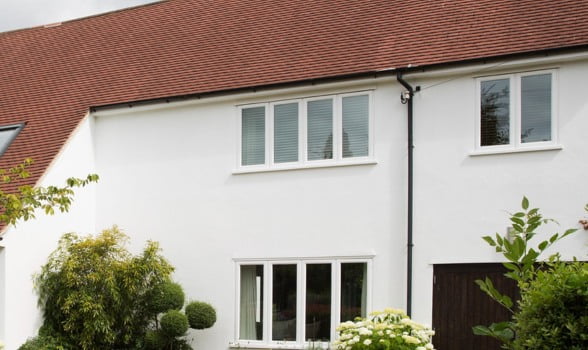Free Call Now
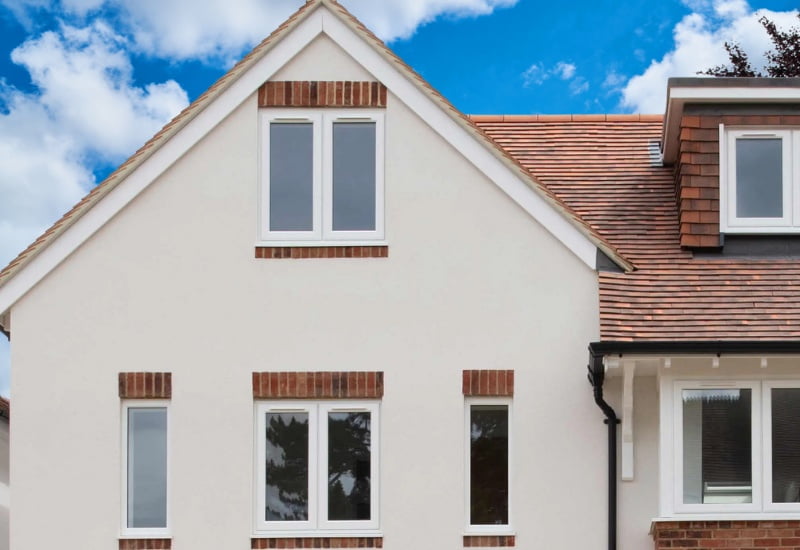
Do you want the exterior walls of your property to really create an impression? Are you fed up with grubby, tired-looking walls? Could your home do with a serious upgrade, offering a clean, sharp, modern appearance?
If the answer to any of these questions is yes, then Render Hero has the ultimate solution with our external house rendering service!
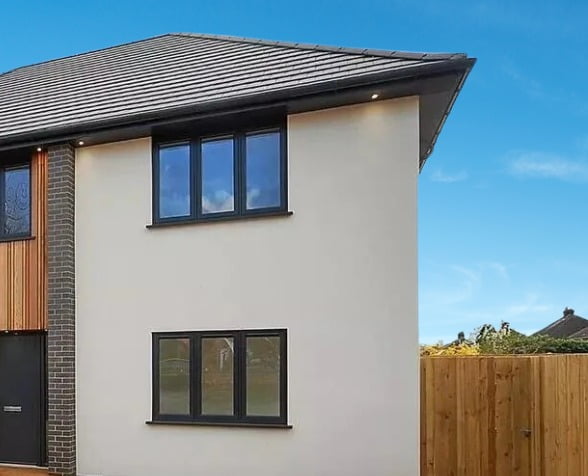
External render has been used for centuries as a practical and decorative feature on buildings of all kinds.
In its basic form, render is a simple type of plaster applied to wall surfaces to protect the property from the elements and improve the external appearance. Traditional renders are like a coat of paint or plaster that you'd use for interior walls, but much thicker and often made of cement, sand, or lime. They are typically mixed onsite and applied in two or three coats.
These days, professionals (like Render Hero) use modern renders in addition to the more traditional render types, and each one has its unique properties and benefits.
Here are some of the more popular types of render we use...
Monocouche rendering, derived from the French word for "single coat," has become the go-to choice for many homeowners in the UK seeking a modern, attractive, and functional exterior for their properties with a beautiful, smooth finish. Here's what makes it so popular:
Unlike traditional renders that require multiple layers, monocouche is a one-coat system. This translates to quicker installation times, reduced labour costs, and less disruption during your home improvement project.
Monocouche renders come pre-coloured (pigment is added during the manufacturing process), eliminating the need for a separate paint application. This not only saves time and money but also ensures a consistent, long-lasting colour throughout the render's lifespan. You'll find a wide range of colours to choose from, allowing you to perfectly complement the style of your home and achieve the desired aesthetic.
Monocouche is a cement-based render formulated to withstand the harsh elements common in the UK climate. It's highly water-resistant, protecting your walls from rain, sleet, and snow. This resistance helps prevent water ingress, which can lead to damp problems and structural damage.
Unlike some render options, monocouche allows your walls to breathe. This breathability helps to regulate moisture within the property, preventing condensation and mould growth. It can also contribute to a healthier and more comfortable indoor environment.
Monocouche render offers good thermal insulation properties. This can help to keep your home warmer in the winter and cooler in the summer, potentially reducing your energy bills and improving overall energy efficiency.
Monocouche render is a versatile mix that combines several key ingredients:
Polymers – To improve the render's flexibility and adhesion, making it more resistant to cracking.
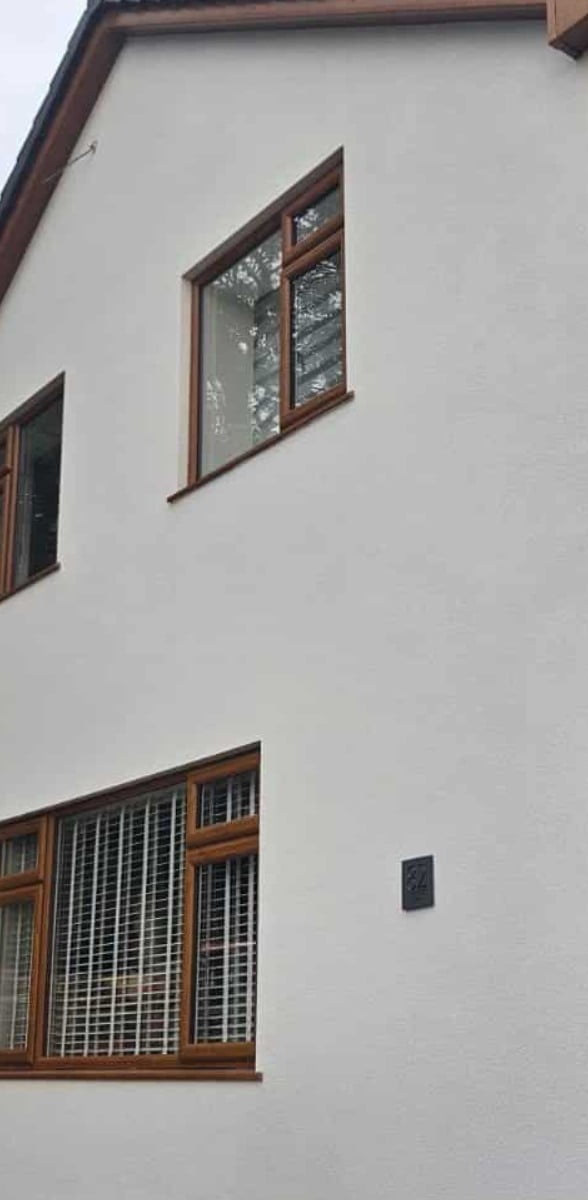
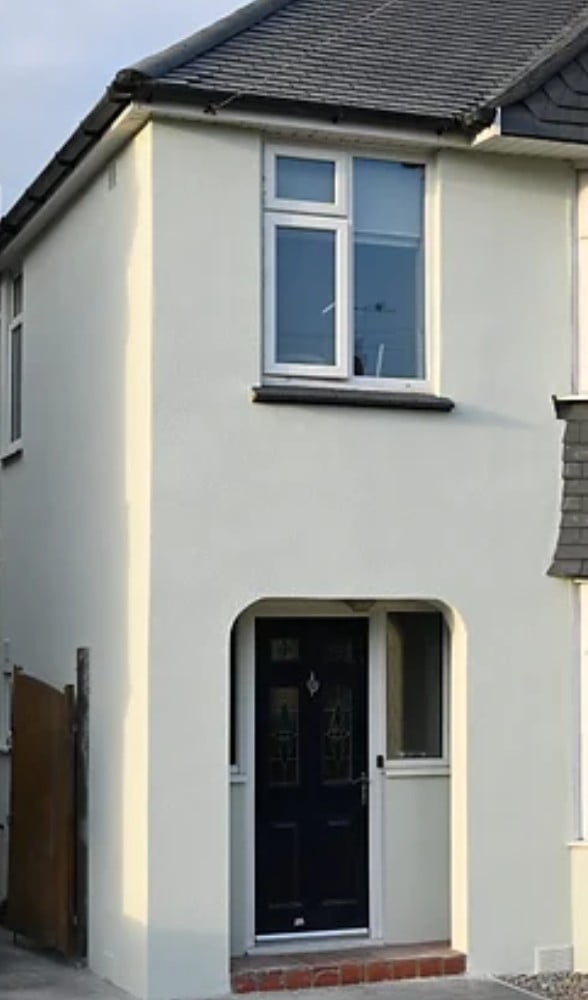
This material, used for centuries in construction, is experiencing a resurgence in popularity due to its unique properties and suitability for older buildings.
Here's what makes it a great option for your home:
Unlike some modern renders, lime rendering is naturally breathable. This allows moisture vapour to pass through the walls, preventing damp issues and promoting a healthy indoor environment. This breathability is particularly beneficial for old properties with solid wall construction.
Lime render is sympathetic to the materials used in traditional construction methods. It allows for natural movement in the structure, reducing the risk of cracking compared to more rigid renders. This makes it a good choice for restoration and renovation projects.
Lime rendering is self-healing to some extent. Small cracks can naturally knit themselves back together over time, reducing the need for frequent maintenance. This adds to the lifespan and durability of the render.
Compared to sand and cement renders, lime rendering generally requires a larger investment. However, its longevity and breathability benefits can outweigh the initial cost in the long run.
While durable, it can be weaker than some modern render options. That is, it is more prone to accidental damage. This is a consideration if your property requires a highly robust exterior finish.
Composition
Lime render is a simple mix of natural ingredients:
Aggregates - Small stones or recycled materials improve the render's structure and strength.
This is a popular choice for modern homes, thanks to its ease of use, durability, and attractive finish. Here's a closer look at the key characteristics:
Acrylic render is known for being easy to maintain. Unlike some renders that require regular painting, this render option is coloured throughout, eliminating the need for additional coatings. This translates to lower maintenance costs and time savings in the long run.
Acrylic render is formulated to withstand the UK climate. It has good water resistance, protecting your exterior walls from rain, wind, and UV rays. This durability helps to maintain the render's appearance and lifespan.
Like monocouche, acrylic rendering comes pre-coloured in a wide range of options. This allows you to choose a colour that complements your home's style and creates the desired aesthetic.
One potential drawback of acrylic render is its reduced breathability compared to some other render options. This can be a concern for older buildings with solid wall construction, as it may trap moisture within the walls.
The key is to select the right render for the property and substrate in question.
While acrylic renders have a reputation for being prone to cracking, this is only an issue in instances where it has been applied incorrectly, an inferior brand of render was used, the substrate wasn’t prepared properly, or there is significant subsidence in the building structure.
A good-quality acrylic render applied by professionals is far less likely to crack than many other types of renders.
Acrylic render is a combination of synthetic and natural materials:
Pigments - Colouring agents to achieve the desired pre-coloured finish.
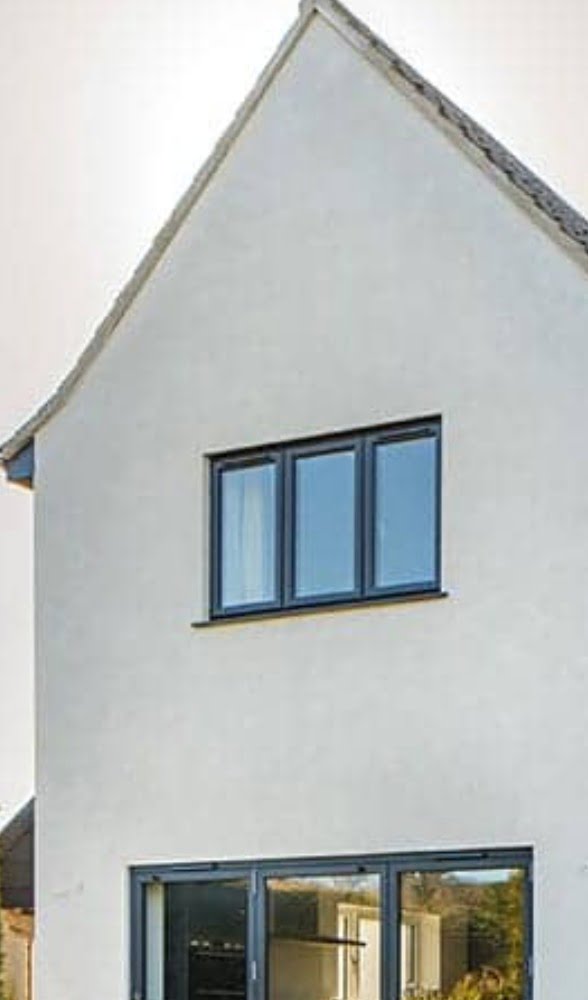
Silicone rendering is the most recent innovation in render technology, with multiple advantages and benefits:
Silicone render boasts exceptional water resistance, making it a perfect choice for the UK's often wet climate. This resistance is attributed to the silicone resin, which forms a hydrophobic (water-repellent) barrier on the render's surface. This translates to several advantages:
Some silicone renders boast self-cleaning properties. While not entirely self-cleaning in the traditional sense, the render's hydrophobic surface repels dirt and grime, making it more difficult for them to adhere. Additionally, rainwater can help wash away loose dirt particles, contributing to a cleaner appearance. However, it's important to note that this doesn't eliminate the need for all cleaning; stubborn stains or built-up dirt may still require occasional cleaning with appropriate methods.
Silicone render is generally considered a highly durable exterior finish. The silicone resin provides strength and flexibility, making the render resistant to cracking and weathering. This translates to a longer lifespan compared to some other render options, potentially reducing the need for costly repairs or replacements over time.
Pigments - These colouring agents give the render its desired pre-coloured finish.
Tyrolean rendering, named after the Tyrol region in Austria, where similar finishes are common, is a popular option for homeowners seeking a distinctive textured exterior for their properties.
Here’s an overview of its unique qualities:
Unlike the smooth render finish of the monocouche or acrylic options, Tyrolean render boasts a rough, pebbled, or textured appearance. This unique aesthetic adds a rustic charm and visual interest to any building's exterior.
Tyrolean render is typically a cement-based mix, often incorporating additives like silicone for enhanced weather resistance. This makes it a strong and durable option that can withstand the elements common in the UK climate.
The textured surface of Tyrolean render helps to shed water, minimising the risk of water ingress and subsequent damage to the underlying walls.
Pigments - While often left in its natural grey colour, Tyrolean render can also be pigmented to achieve a desired colour.
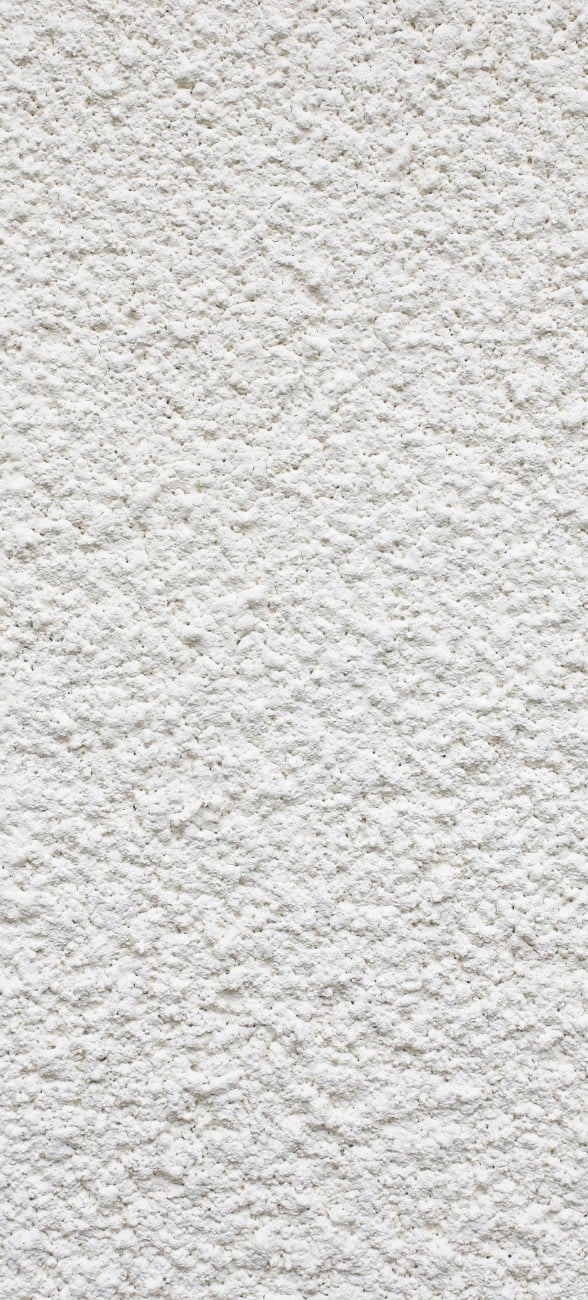
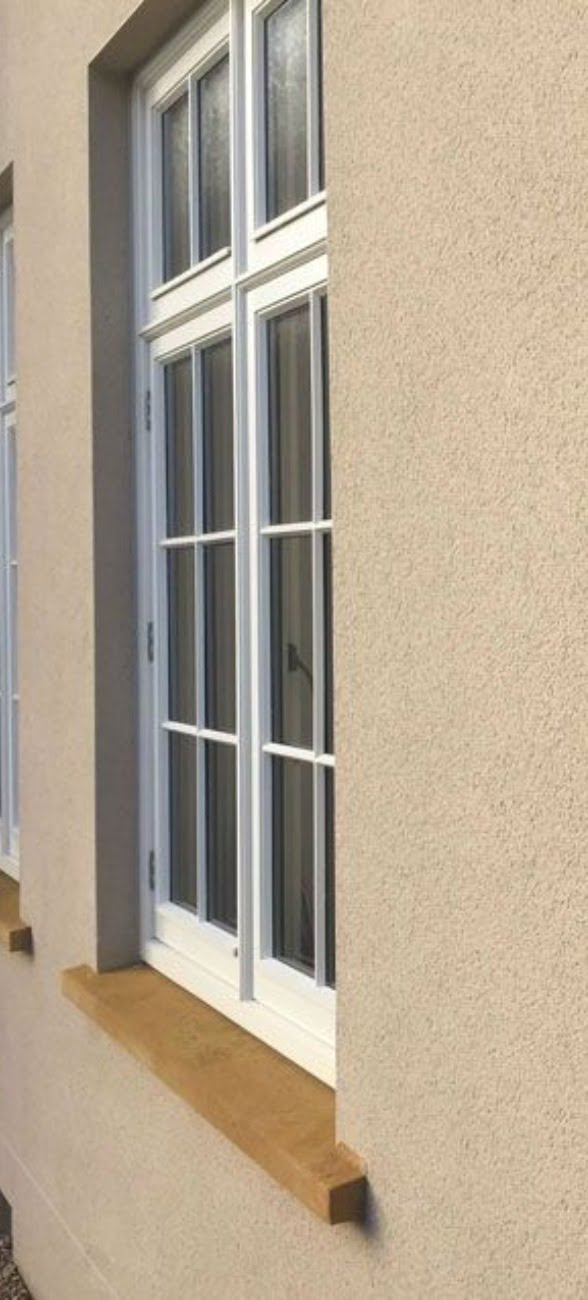
This is a broad term encompassing renders that incorporate synthetic polymers alongside traditional render materials. This combination offers a range of benefits, making it a popular choice for modern homes.
Here are the key characteristics:
The composition of polymer render varies depending on the specific type, but it typically includes:
Additives - Depending on the desired properties, additional ingredients like aggregates, pigments, or water repellents might be included.
Both pebble dash and wet dash rendering are popular rendering techniques used to create textured exterior finishes for houses in the UK. While they share some similarities, there are key differences in their appearance and application methods.
Pebble Dash
Wet Dash
Choosing Between The Two
The best choice for your property depends on your desired aesthetic and practical considerations.
Additionally, consider factors like the style of your property and the overall look you're aiming to achieve.
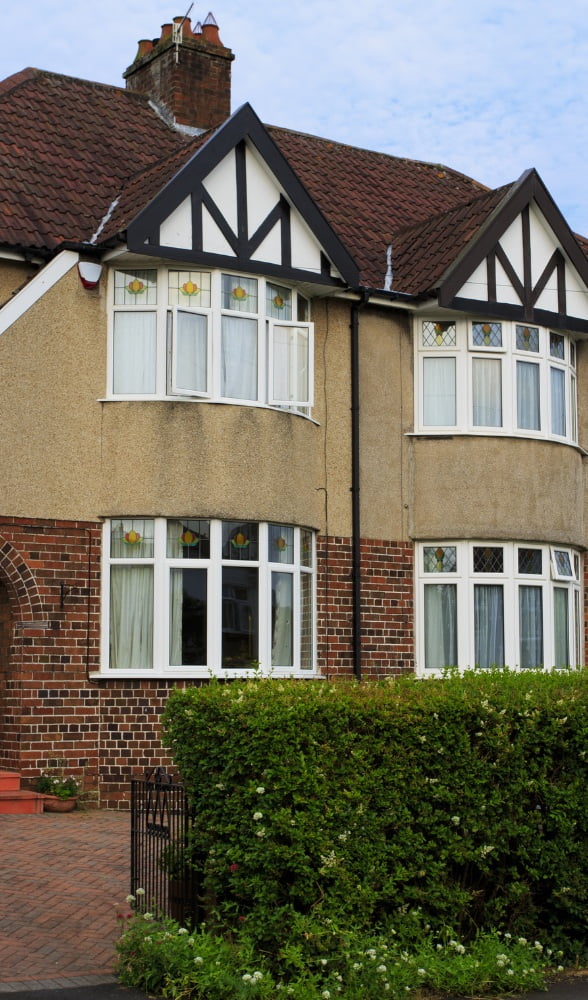
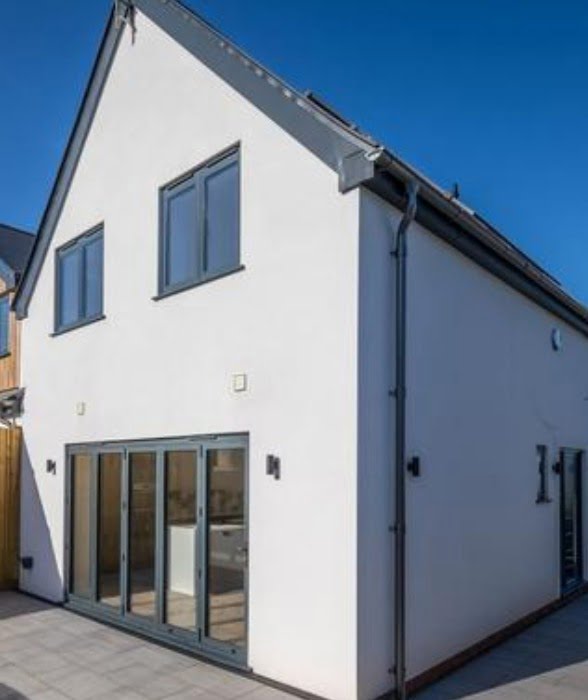
A typical render system in the UK can last anywhere from 20 to 40 years.
However, several factors can influence how long your render actually lasts:
*We also offer a render cleaning service!
Here's a quick reference for the lifespan of some popular render options:
Pebble Dash/Wet Dash - 20 to 40 years
A coat of fresh, new render can be a fantastic investment for your property, offering a multitude of benefits that can enhance its appearance, value, and overall performance. Here's a closer look at why rendering your house might be a worthwhile decision:
First impressions matter, and rendering can dramatically transform the look of your house. A fresh coat of render in a chosen colour can give your property a clean, modern, or even a classic and timeless aesthetic, depending on your preference. Coloured render provides a visual upgrade that can significantly boost your home's kerb appeal, making it stand out on the street and potentially increasing its value.
Rendering acts as a protective layer for your external walls, shielding them from the elements. This translates to better resistance to rain, wind, and UV rays. A good render system can help to prevent water ingress, which can lead to damp problems and structural damage if left unchecked. This protective barrier can contribute to the longevity of your home's exterior.
Certain render options, particularly those with good insulating properties, can contribute to improved thermal efficiency. This can help keep your house warmer in the winter and cooler in the summer, potentially leading to reduced energy bills and a more comfortable living environment.
Modern render systems generally don't require a lot of maintenance compared to traditional brickwork. Depending on the chosen render type, you might find that cleaning becomes easier, and repainting (for non-coloured renders) with masonry paint might not be necessary as frequently. This can save you time and money in the long run.
A well-maintained rendered property can be more attractive to potential buyers, potentially fetching a higher price on the market. The improved kerb appeal, weather protection, and potential energy efficiency all contribute to the overall value proposition of your home.
Rendering is available in various colours, textures, and finishes. This allows you to customise the look of your house to perfectly complement its architectural style and your personal taste. Whether you prefer a sleek modern look or a more traditional textured finish, there's a render option to suit your vision.
House rendering can be seen as an investment in your property. The benefits it offers in terms of aesthetics, visual appeal, weather protection, and potential value increase can contribute to the overall enjoyment and value of your home for years to come.
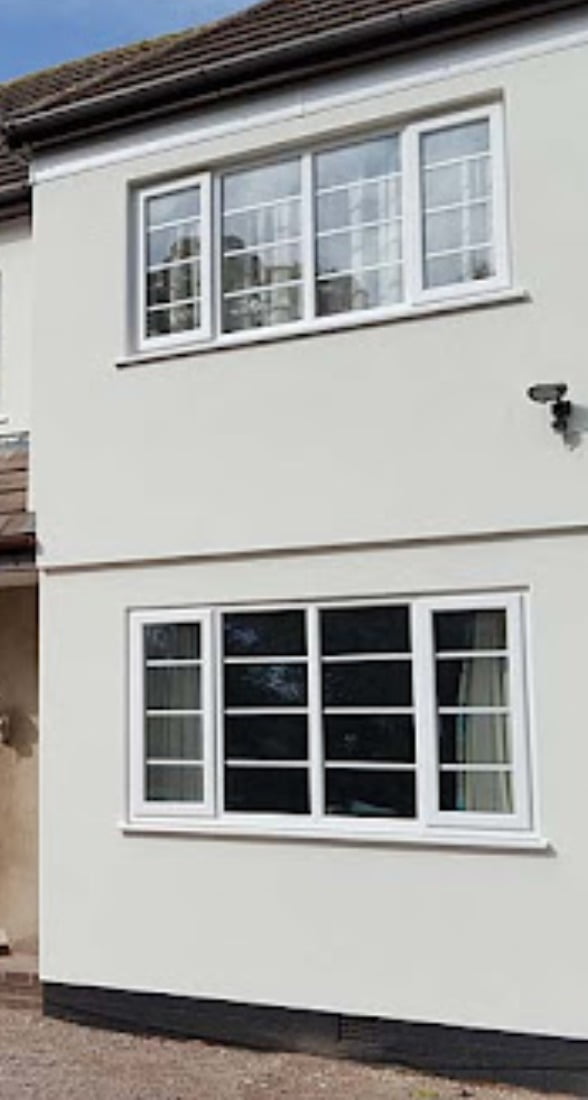
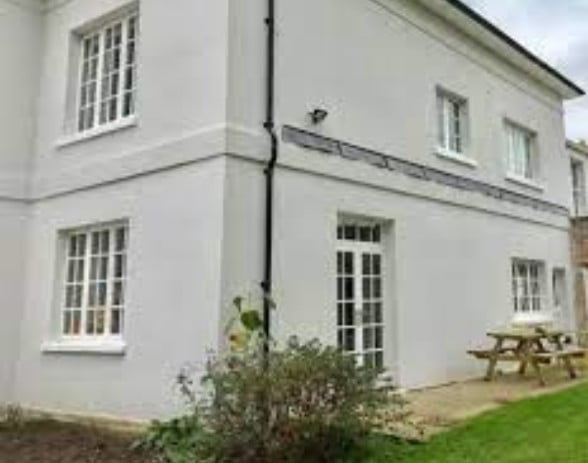
It's not usually required for most types of render unless you live in an AONB or Conservation Area. Also, if you have a period property, there may be restrictions as to the type of render coat you can choose.
For the most part, rendering a house is covered by the Permitted Development Rights, so you don't need to worry about planning permission.
If you live in a terraced house or semi-detached,
Building regulations may apply, as the rules regarding the minimum thickness of insulation material are frequently changing, particularly in relation to replacing or upgrading the existing render.
However, it's best to confirm this with your local planning department if there is any doubt or if you want to be absolutely certain.
While cavity wall insulation is a great way to save money and make your home more energy efficient, it's not always an option.
In these cases, we can install external wall insulation (EWI), which involves adding an insulating layer to the outside walls of your house using layers of insulation, mesh and a top coat render. This additional layer helps to trap heat inside your home, making it more energy-efficient and potentially reducing your heating bills.
Maintenance - The type of external finish applied to the EWI (render or cladding) will determine the maintenance requirements.
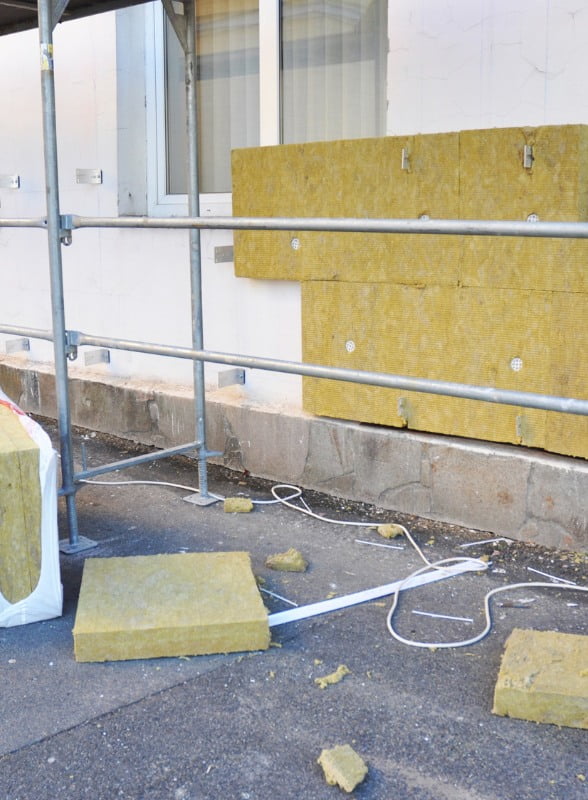
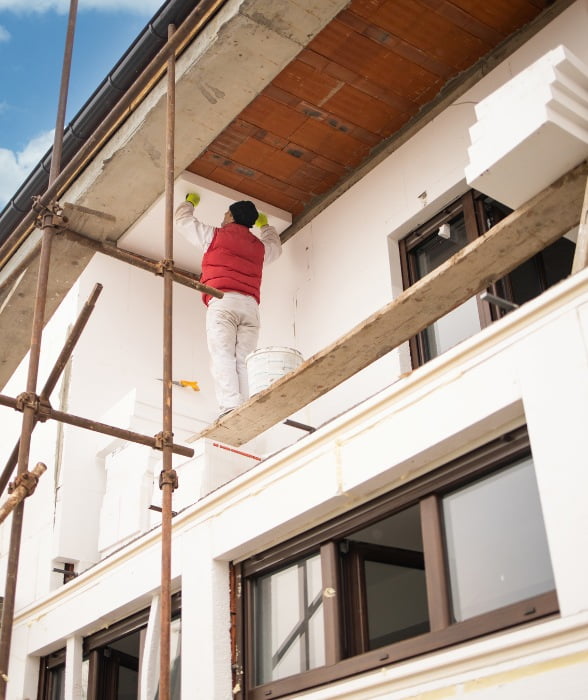
The total cost of rendering a house can vary significantly depending on several factors, such as:
For a typical-sized house (around 3 bedrooms), expect to pay anywhere from £2,500 to £8,000 for rendering the entire property.
This range can be further broken down based on render type:
Building Regulations - In some cases, building regulations approval might be required for rendering projects.
Breathe new life into your property with a stunning and long-lasting render from Render Hero. We offer a variety of high-quality render options to suit any style and budget. Our experienced team is dedicated to providing exceptional service and flawless results.
Contact Render Hero today for a free quote and discover how a fresh render can transform your home!
